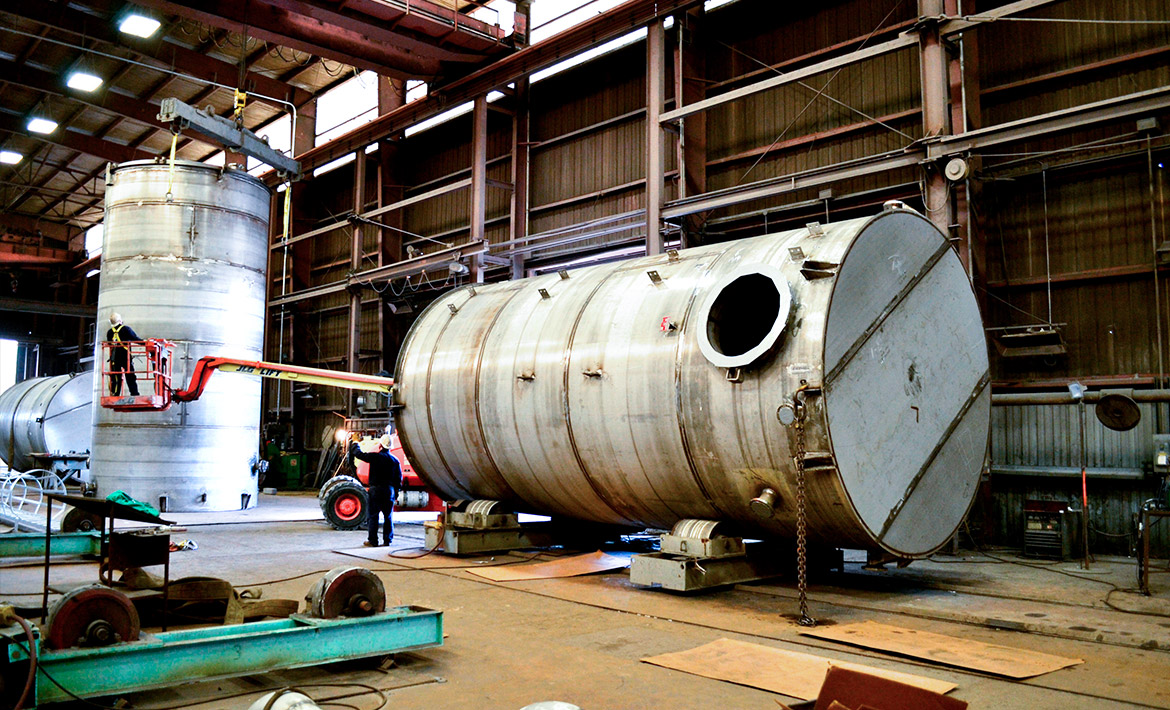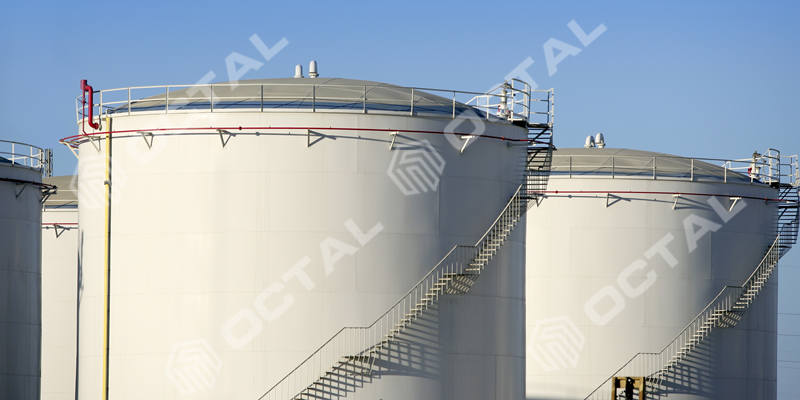All Regarding Welding Examination: Secret Perks for Your Tasks
Welding inspection plays an important function in the building and manufacturing industries. It assures that welded joints fulfill high quality and safety and security requirements. By recognizing defects early, projects can stay clear of substantial delays and economic losses. Complying with industry standards not just safeguards the honesty of the end product yet likewise builds trust fund among stakeholders. Understanding the subtleties of this process exposes fringe benefits that can impact task results considerably. What are these benefits?
Comprehending the Welding Examination Process
Welding is a critical element in different sectors, the inspection procedure is necessary to guarantee high quality and safety. This process includes a series of methodical examinations designed to determine any prospective concerns that might compromise the honesty of welded joints. Inspectors evaluate welding procedures and qualifications to verify conformity with sector standards.
Following this, aesthetic evaluations are performed to examine the general appearance and finish of welds. Non-destructive testing strategies, such as radiographic or ultrasonic testing, may additionally be utilized to discover internal problems without harming the material. Documentation plays an important duty, as it provides a document of examinations and searchings for, validating traceability and responsibility.
Ultimately, recognizing the welding evaluation procedure fosters confidence in the top quality of the ended up item, decreases the threat of failings, and enhances general task success in different applications, from building and construction to manufacturing. API 650 Welding Inspection.
Typical Kinds Of Welding Flaws
Welding issues can greatly affect the honesty and efficiency of welded structures, as they might result in failings under tension or unfavorable conditions. Usual sorts of welding issues include fractures, porosity, incomplete blend, and slag addition. Cracks can create because of thermal tensions or incorrect air conditioning, compromising the joint's toughness. Porosity describes the visibility of gas bubbles entraped in the weld, which can compromise the joint and reduce ductility. Insufficient combination takes place when the weld metal does not appropriately bond with the base product, resulting in weak places. Slag inclusion happens when non-metallic contaminations come to be entraped within the weld, leading to a decrease in architectural honesty. Identifying these issues early via inspection is important for preserving quality and guaranteeing safety and security in bonded frameworks. Comprehending these usual defects permits for enhanced welding methods and enhanced job outcomes.
Importance of Conformity With Industry Requirements
Conformity with industry standards is important for maintaining architectural integrity in welding tasks. Complying with these requirements not just mitigates obligation risks yet also boosts the overall top quality of the ended up work. This alignment cultivates trust fund amongst stakeholders and guarantees that predicts meet both safety and efficiency assumptions.
Making Certain Structural Honesty
Assuring structural stability is paramount in any kind of building and construction or manufacturing project, as adherence to industry criteria acts as a foundation for security and reliability. Conformity with these criteria warranties that welding processes meet strenuous specs, which is essential for the toughness of structures. Routine welding evaluations validate that products and strategies line up with developed guidelines, avoiding prospective failures that might jeopardize honesty. Furthermore, following industry criteria promotes uniformity in quality, which is essential for preserving public count on building methods. By focusing on architectural stability through persistent adherence to requirements, companies can enhance the general performance of their tasks, bring about much safer environments and long term property life-spans. Eventually, this commitment shows a proactive strategy to quality control in welding practices.
Reducing Liability Dangers
Adhering to market standards substantially reduces liability risks related to welding tasks. Compliance with established guidelines assurances that welds fulfill security and performance criteria, minimizing the probability of failings that could lead to accidents or lawsuits. This proactive approach not just shields the workforce however additionally safeguards the monetary passions of the company. Insufficient assessments or ineffective methods can bring about costly repairs, legal disputes, and damage to reputation. By applying rigorous welding examinations, firms demonstrate their dedication to quality and security, inevitably reducing direct exposure to potential claims. In addition, adherence to policies strengthens count on among stakeholders and clients, as it indicates a devotion to keeping high criteria throughout the project lifecycle. Lowering obligation threats is crucial for lasting service sustainability.
Enhancing Job Top Quality
Extensive welding assessments not just minimize liability threats but also play a pivotal duty in improving total job top quality. By sticking to sector criteria, these assessments ensure that welds satisfy defined criteria for durability, safety, and stamina. Compliance with developed guidelines assists recognize problems early, lowering the likelihood of costly rework or task delays. Furthermore, consistent quality assurance promotes depend on among stakeholders, consisting of customers and regulative bodies, which can result in duplicate service and positive references. Inevitably, a commitment to top quality welding methods not only improves the stability of the end product but likewise promotes the reputation of the organization entailed. Comprehensive examinations offer as a keystone for sustainable and effective project results.
Advantages of Early Discovery of Issues
Early detection of welding problems uses substantial advantages, specifically pertaining to cost financial savings on repairs. By determining issues before they intensify, companies can enhance the architectural integrity of their projects. This aggressive technique not only lessens economic expenditures yet also promotes safety and reliability in welded structures.
Price Cost Savings on Fixes
Detecting welding concerns promptly can lead to substantial price financial savings on repair work. Early recognition of defects enables for targeted treatments, reducing the degree of damage and protecting against pricey, extensive repair services in the future. When troubles are resolved throughout the initial stages of a task, resources are utilized extra efficiently, minimizing both labor and material prices. Additionally, timely evaluations can protect against job hold-ups, which typically incur added costs. By remedying concerns early, business can avoid the monetary problem connected with rework, warranty claims, and possible safety and security threats. Inevitably, buying proactive welding assessments promotes a more cost-effective method to project administration, guaranteeing that budget plans continue to be undamaged while keeping the quality and reliability of the end visite site product.
Improved Structural Stability
Making certain the structural honesty of welded components pivots on the prompt recognition of prospective concerns. Early detection during the welding inspection process enables for the immediate rectification of defects such as cracks, spaces, or inappropriate fusion. published here Addressing these issues promptly not only boosts the strength and toughness of the weld yet likewise mitigates the danger of devastating failures throughout the life span of the structure. Regular evaluations add to an extra reliable analysis of weld quality, making certain compliance with industry requirements. By prioritizing welding assessments, project supervisors can preserve a greater level of safety and security and performance, ultimately causing successful project results. Improved structural stability mirrors the dedication to quality and adherence to finest methods in welding.
Cost-Effectiveness of Welding Inspections
While numerous companies might watch welding examinations as an additional expenditure, they often prove to be an economical investment in the future. By identifying issues early, these evaluations can prevent costly fixings or substitutes that may arise from unseen problems. This positive strategy not only saves cash yet likewise lessens job delays, ensuring that timelines are stuck to.

Additionally, high-grade welding examinations contribute to boosted performance, leading to less rework instances and boosted productivity. The reduction in product waste and labor expenses related to redesigning damaged welds includes in the economic benefits.
Buying extensive inspections likewise improves the general top quality of the end product, which can bring about increased customer fulfillment and repeat organization. Inevitably, the initial prices related to welding examinations are frequently exceeded by the long-term cost savings and advantages they supply, making them a wise selection for any type of welding project.
Enhancing Security and Reliability in Welding Projects

Welding examinations play a crucial duty in boosting safety and security and dependability within welding tasks, as they systematically determine prospective risks and weaknesses in welds. By using certified examiners, companies can guarantee that welding processes follow market criteria and regulative requirements. This aggressive approach reduces the danger of weld failures, which can cause mishaps, expensive repair work, and task hold-ups.
Moreover, assessments provide essential documentation that confirms conformity and quality assurance, promoting trust between stakeholders. Regular assessments during numerous job phases allow for the timely detection of concerns, enabling rehabilitative activities before they escalate. Furthermore, the insights obtained from inspections add to continual improvement in welding practices, enhancing overall task end results. Eventually, robust welding evaluation protocols not just shield workers yet additionally secure financial investments, guaranteeing that projects are completed efficiently and meet the highest safety and integrity criteria.
Regularly Asked Questions
What Credentials Should a Welding Inspector Have?
A welding inspector should have pertinent qualifications, pop over to this web-site such as Certified Welding Inspector (CWI), along with comprehensive expertise of welding procedures, codes, and materials. API 650 Welding Inspection. Experience in the field and strong analytical skills are also crucial for effective assessments
Just How Typically Should Welding Inspections Be Performed?
Welding examinations need to be performed frequently, generally in the past, throughout, and after the welding process. The frequency might rely on task requirements, regulatory needs, and the complexity of the welds to ensure architectural integrity and safety.
Can Welding Inspections Be Performed Remotely?
Welding assessments can certainly be carried out from another location, utilizing advanced modern technologies such as drones, electronic cameras, and ultrasonic screening devices - API 650 Welding Inspection. This technique permits effective monitoring while reducing the demand for physical visibility at the website
What Devices Are Used in Welding Inspections?
Welding examinations use numerous devices, including ultrasonic testers, magnetic bit testers, aesthetic assessment tools, radiographic equipment, and calipers. Each device offers a certain objective to ensure weld stability, high quality, and compliance with industry criteria.
Just how Do I Pick a Welding Assessment Solution?

To select a welding examination service, one need to review qualifications, experience, and certifications. Furthermore, evaluating client testimonials and asking for detailed service descriptions can aid guarantee the picked solution satisfies particular project needs effectively.
By focusing on welding inspections, task managers can preserve a greater degree of safety and performance, inevitably leading to successful task results. Welding inspections play a vital role in boosting safety and security and integrity within welding projects, as they systematically identify potential dangers and weaknesses in welds. A welding inspector should have pertinent qualifications, such as Licensed Welding Examiner (CWI), along with comprehensive knowledge of welding materials, procedures, and codes. Welding inspections need to be conducted consistently, usually previously, during, and after the welding process. Welding inspections use different tools, including ultrasonic testers, magnetic bit testers, visual evaluation tools, radiographic devices, and calipers.